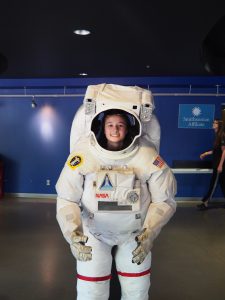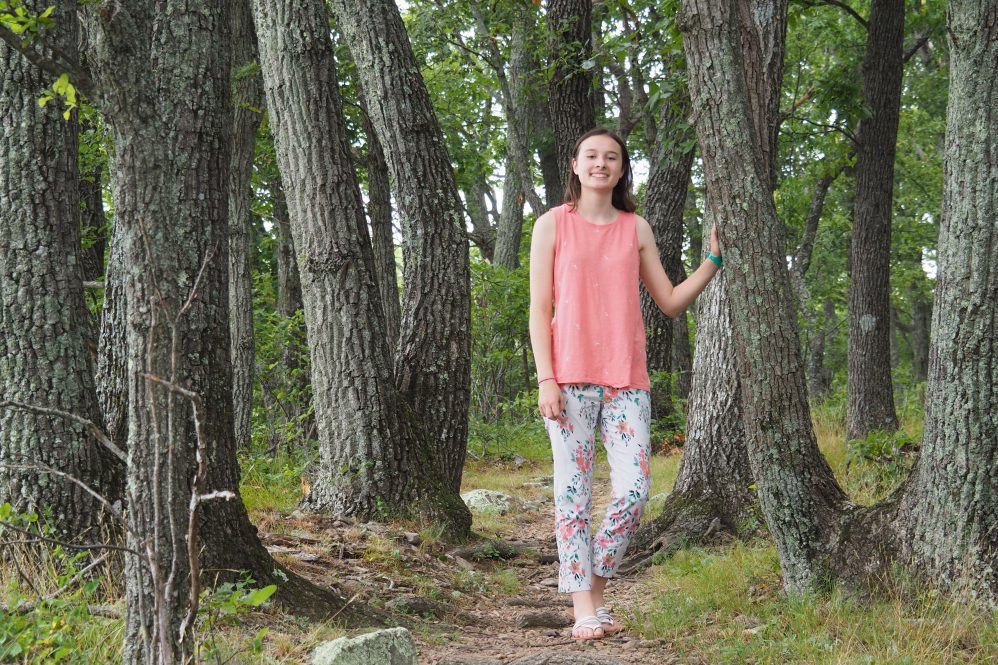A third-grade science project introduced Angela Bojarski, now 16, of Scotland, Connecticut, to astronomy, and she’s loved the subject ever since. She joined UConn 4-H five years ago and made astronomy her primary 4-H project. One of the hallmarks of the UConn 4-H program is that it provides youth with life transformative experiences and empowers them to choose the topic. The self-directed route of the 4-H program, along with guidance from her volunteer leader and UConn Extension 4-H educator, have helped Bojarski take her passion for astronomy down the path of a potential career.
“You know how everyone is encouraged to do STEM careers, 4-H is where you can actually try them,” Bojarski says. “UConn 4-H isn’t just about agriculture; I didn’t realize all the options that were available until I got involved.”
Sights on the Stars with UConn 4-H
Bojarski started her 4-H astronomy project with aerospace. At first, she just experimented with Styrofoam planes to explore the forces of flight and went on a stargazing hike as she was learning more about the solar system. Then, she “leveled up,” with a focus on star navigation, learning how to navigate the winter constellations.

Bojarski’s project keeps letting her interest soar and grow to keep pace with her new knowledge.
“Now, I’m exploring the engineering concepts that are used with rockets in space,” she says. “Previously I had just explored the celestial events, why they all happen, what causes a meteor shower, and other concepts. But now I’m learning the science behind everything, and this will also be my senior capstone project at Parish Hill High School.”
Bojarski has come a long way since Styrofoam and hikes. She’s now teaching herself to build computer models for astronomy and wants to explore this as a potential career.
Building on the 4-H Foundation
Bojarski attended the U.S. Space and Rocket Center’s Space Camp in Huntsville, Alabama in summer 2022, through the Girl Scouts Destinations initiative. During the weeklong camp, Bojarski learned about the space exploration program and how it started. Campers completed astronaut simulation trainings, scuba diving training, and a moon gravity simulation, in addition to their classroom time.
“The cool moon walks are harder than they look,” Bojarski says. “We completed three missions at camp, and one took place on Mars. It was three hours long and everyone had a role in it. We also simulated spinning on all three axes, and this was the best training we did.”
“It’s wonderful to see teens take advantage of the many leadership opportunities that UConn 4-H has to offer,” says Nancy Wilhelm, state 4-H program coordinator with UConn Extension. “Bojarski has taken an active leadership role with her 4-H fair, serves on the UConn 4-H Teen Council as well as the planning committee for State 4-H Citizenship Day. She has expanded her leadership roles significantly and as a result has become a much more confident 4-H member who is excited to try new things and adapts well to change. This will serve her well as she makes college and career plans.”
“4-H has helped me take new steps each year towards a career path,” Bojarski says. “I’m achieving my goals through UConn 4-H. Every year I complete my record book and at the end of the year, [I] see what I’ve accomplished. I can learn new things because of the goals I set early in the 4-H year.”
UConn 4-H is the youth development program of UConn Extension. 4-H has access to research-based, age-appropriate information needed to help youth reach their full potential through UConn’s College of Agriculture, Health and Natural Resources. The mission of 4-H is to assist all youth ages five through 18 in acquiring knowledge, developing leadership and life skills while forming attitudes that will enable them to become self-directing, productive, and contributing members of their families and communities.
Follow UConn CAHNR on social media



